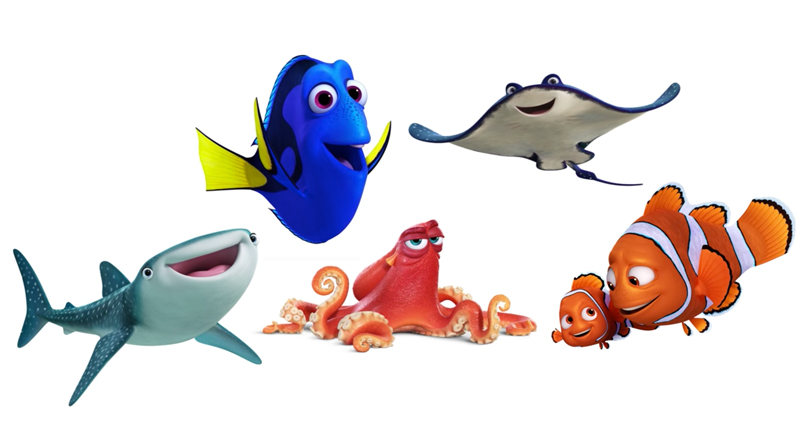Finding Dory, like its prequel Finding Nemo, appealed to a huge audience and was universally beloved by the marine aquarium hobby. Part of this success was due in large part because every character in the movie is based on a real life animal. This story design choice, to use real living animals as the basis for all the characters in the Finding Nemo and Finding Dory movies, makes the characters more relatable, and helps us empathize with the challenges faced by the movie’s stars.
It makes us shudder to see deco art of ‘tropical fish’ which are not even real, when there are so many more fantastical looking fish that can be found in nature. It doesn’t get much crazier in terms of color and pattern than an emperor angelfish, clown triggerfish, harlequin filefish, and countless others.
We worked the retail LFS beat before and after the release of Finding Nemo and we can’t even express how irritating it was to have little kids come into the shop, run over to the clownfish and start screaming “NEMO! NEEEEMOOOO, LOOK MOM IT’S A NEMOFISH . . .” – surely many of you current and past retail fish store workers can relate.
However, what is more important is that a whole generation grew up with an intimate affection for caricatures of real marine animals. Finding Nemo was released long enough ago that perhaps the current rosters of young people studying to be marine biologists, public aquarists and oceanographers were inspired by the movie, whether they admit it or not.
This is the real power of the Finding Nemo/Dory movies, to get kids who’ve never seen the ocean, or under the sea, to care about real living animals. With the release of Finding Dory, a whole new set of lovable characters, with some notable additions to the cast being Destiny the Whale Shark, and Bailey the Beluga Whale. This video from Coral Publications introduces the characters of Finding Dory, with lots of information about the living animals on which they are based – consider this the cliff notes for when Finding Dory is released in theaters June 17th.



